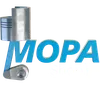OIL LEVEL POINTER Display for diesel and marine engines
The Display category covers all human–machine interfaces that visualize critical engine parameters in real time. In propulsion plants, auxiliary gensets, and industrial power units, robust displays transform sensor data into clear, actionable information for operators and engineers. From compact analog gauges to advanced TFT HMIs and annunciator panels, these Displays make lubrication status, temperatures, pressures, and alarms immediately visible—supporting fast decisions that protect the engine. Within this scope, the OIL LEVEL POINTER readout is a core element, ensuring the lubricating oil volume stays within safe limits for bearings, turbochargers, and pistons.
Technical function of Display and OIL LEVEL POINTER in engine monitoring
Displays act as the visualization layer of the engine monitoring system. Sensors in the sump, tanks, and lubrication circuits transmit signals via CAN, Modbus, or proprietary protocols to a controller; the Display then renders precise values, trends, and alerts. For the lubrication system, the OIL LEVEL POINTER indication shows minimum/maximum marks, trending levels over time, and threshold-based alarms. In a diesel engine or marine engine, this function prevents both overfill—leading to oil aeration and foaming—and low oil level, which risks boundary lubrication and accelerated wear.
Depending on the application, Displays combine analog scales for quick at-a-glance checks with digital precision to 0.1 L or to a percentage of nominal capacity. Brightness-adjustable backlights, wide viewing angles, and anti-glare coatings maintain readability in engine rooms. Ruggedized housings with high ingress protection resist oil mist, salt-laden air, and vibration. When integrated with OEM parts, an OIL LEVEL POINTER display can correlate level with oil temperature and pressure, offering context-aware alarms and better diagnostic insight.
- · Clear visibility in low light and glare conditions.
- · IP-rated housings for harsh engine-room environments.
- · Stable readings under vibration and shock.
- · Compatible with common bus systems (CAN, Modbus).
- · Calibrated scales matched to sump and day-tank geometry.
- · Alarm integration for low/high oil level.
- · Data logging and trend display for predictive maintenance.
- · Service-friendly design for fast replacement.
Why reliable Displays and OIL LEVEL POINTER readings matter
The Display is more than a convenience—it is a protective layer for engine assets. If the OIL LEVEL POINTER display is inaccurate, sluggish, or unreadable, operators may miss the narrow band where lubrication is optimal. Chronic low level promotes metal-to-metal contact at main and big-end bearings, raises friction losses, and can starve turbocharger bearings. Overfill increases oil carryover, fouls charge-air coolers, and elevates crankcase pressure, with a risk of leaks and environmental incidents. In extreme cases, sustained misreadings lead to unplanned stops, liner scuffing, and costly overhauls.
Reliable Displays with correct scaling and alarm points support fuel efficiency and emissions compliance. Proper oil level reduces parasitic drag, stabilizes oil temperature, and preserves additive performance, extending oil change intervals and component life. For fleet operators, consistent OIL LEVEL POINTER diesel engine readings across vessels or plants also standardize procedures and reduce human error.
Advantages of OEM spare parts suitable for Display and OIL LEVEL POINTER
Choosing OEM spare parts suitable for Displays, including OIL LEVEL POINTER visualization modules, ensures exact fit and consistent performance. Signal conditioning, pin assignments, and firmware versions match the engine control system, minimizing commissioning time and the risk of miscalibration. Optical characteristics such as brightness, chromaticity, and digit height remain consistent with the installed base, so crews read values correctly at a glance. Mechanical dimensions, mounting patterns, and connector types align with existing panels and consoles, preserving enclosure integrity and IP rating.
With OEM parts, the OIL LEVEL POINTER marine engine interface retains the calibrated correlation between sensor output and displayed value—crucial for non-linear tank geometries. Materials and coatings meet relevant EMC, shock, and vibration standards, protecting readability and electronics under engine-room conditions. Lifecycle alignment and predictable lead times support budgeting and planned maintenance, while documentation and test reports simplify class audits.
How OEM OIL LEVEL POINTER Displays enhance uptime
An OIL LEVEL POINTER diesel engine display sourced as OEM parts maintains interoperability with the engine ECU and alarm logic. This keeps low/high-level thresholds, latching behavior, and event logging consistent across units—reducing troubleshooting time. Sealed keypads, conformal coating, and validated connectors extend service life, while standardized spares streamline crew training and inventory.
MOPA: your partner for OEM Display and OIL LEVEL POINTER solutions
MOPA is an experienced and reliable partner for OEM spare parts in the Display category, including OIL LEVEL POINTER visualization for diesel and gas engines. We focus on speed, quality, and security throughout the supply chain—rapid sourcing from approved channels, traceable documentation, and careful packaging for offshore and shipboard deliveries. Our team supports selection, cross-references, and technical clarification, helping you specify the correct Display, interface, and accessories for your control system.
Whether you need drop-in replacements for analog gauges, multifunction HMIs with data logging, or dedicated OIL LEVEL POINTER marine engine indicators, MOPA provides OEM parts that align with your equipment’s electrical, mechanical, and software requirements.
Conclusion: Display and OIL LEVEL POINTER for dependable engine operation
Displays are the frontline of engine monitoring, and an accurate OIL LEVEL POINTER readout is essential to protect lubrication systems, performance, and uptime. Selecting OEM spare parts suitable for the Display category safeguards fit, calibration, and durability—delivering consistent readings and dependable service life in demanding diesel and marine applications.


